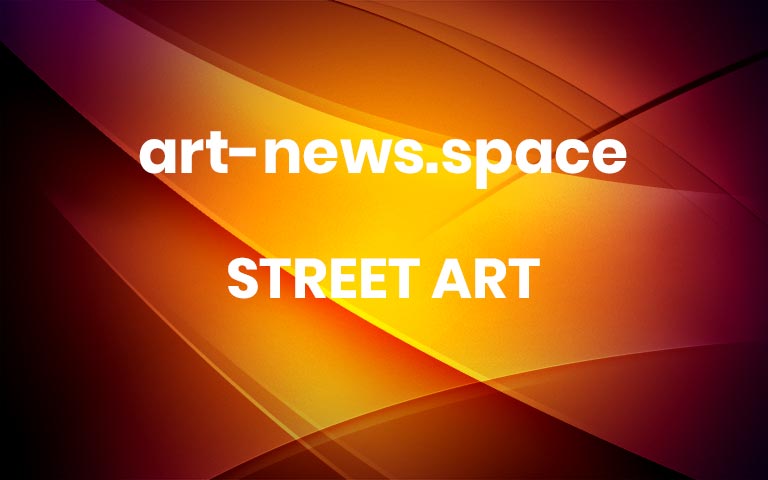One does not expect the first big New York fall art show one attends to be Banksy, but the Art Gods will have their say.
Just hours before the remnants of Hurricane Ida steamrolled the New York region, I made my way to an exhibition space on 14th Street, near a Foot Locker and a Pinkberry, for the sprawling show “Banksy: Genius or Vandal?” The traveling exhibition (one of several currently making the rounds) offers a deluge of some 100 prints by the famed street artist, whose guerrilla works—sometimes politically incisive, sometimes absurdly humorous, sometimes just cute—have captivated a mass audience for years. The show contains a VR experience, a video montage of the anonymous artist’s works, and scene-setting flourishes like a mock British phone booth.
The artist is not amused by these tributes. When the show appeared in Moscow in 2018, his responses, in an Instagram post, included “What’s the opposite of LOL?” He disavowed the show, saying, “I don’t charge people to see my art unless there’s a fairground wheel.” Tickets to the New York presentation cost $29.50, or $19.90 for kids; to date, it has drawn over 3 million visitors in 15 cities…you do the math. (Banksy’s post did, however, acknowledge the irony of criticizing unauthorized presentations of his unauthorized works.)
The show is organized in cooperation with Banksy dealer Andrew Lilley; a great many of the prints are from his holdings. Helpfully, if you’re feeling acquisitive, the wall labels point you to his website. And the spectacle is produced by Exhibition Hub and Fever, which between them offer exhibitions on artists like Claude Monet, Gustav Klimt, and Michael Jackson. Probably Fever’s best known offering would be “Van Gogh: The Immersive Experience,” which got them in hot water with New York’s Better Business Bureau when customers confused it with “Immersive Van Gogh,” the Emily in Paris one.
Installation view of the immersive (and unauthorized) Banksy exhibition “Genius or Vandal.” Photo courtesy of Erick Pendzich.
Girding myself for what press reps promised was a “family-friendly storytelling experience,” I headed first to the VR presentation. To a politely funky soundtrack, I floated through grit-dusted alleyways, where animated Banksys pop up on the graffitied walls as if being painted live. The 10-minute voyage packs in the works, and they go by too fast. This sets the tone for an overstocked show that screams “I’m a blockbuster!”
Some of the displays are clever enough. At the entry, the organizers—admitting that they can’t offer the conventional biography—provide the next best thing: a recreation of the artist’s studio from his hit 2010 mockumentary Exit Through the Gift Shop. But it faces off with the show’s worst sin, a curtained room with a blaring videomontage, complete with grating soundtrack (sirens and police radios, get it?), of numerous works connected by red string in the classic evidence board motif. The sound drowns out thought in the neighboring galleries.
All the hits are here, represented by the prints the artist makes to complement his wall works in the wild—Girl with a Balloon, Riot Copper, Monkey Parliament, Dismaland, Walled-Off Hotel—and grouped under themes like politics, Brexit, consumption, and protest. Taken together, the breadth of Banksy’s output and the many tough subjects he has tackled, from the surveillance state to the police state to the state of constant war, is impressive. I was heartened to be reminded that he puts his money where his mouth is—raising money to assist women in Greek refugee camps, for example, and converting Dismaland’s building materials into housing for refugees.
A viewer takes in the Banksy exhibition “Genius or Vandal.” Photo courtesy of Erick Pendzich.
But that made seeing this art in a gigantic, money-minting corporate expo all the more disheartening. Overall, the experience of encountering works that give form to ideas expressed in the street, continents apart, divorced here from their local and temporal context, had the effect of taming them, leaving me feeling as if I were observing one of Banksy’s classic feral rats, bathed, combed, and caged.
Banksy points out in his book Wall and Piece that rats “exist without permission,” that “if you are dirty, insignificant and unloved, then rats are the ultimate role model.” Fun fact: They can also swim for three days on end. As the skies opened up over New York, sending down a record three inches of rain per hour, I realized that maybe Banksy is right. Maybe we need to learn something from the rats. And that even an unauthorized show about a guerrilla artist has, like these animals, a right to exist.
“Banksy: Genius or Vandal” is currently on view at 526 6th Avenue, New York City.
Follow Artnet News on Facebook: Want to stay ahead of the art world? Subscribe to our newsletter to get the breaking news, eye-opening interviews, and incisive critical takes that drive the conversation forward. More



